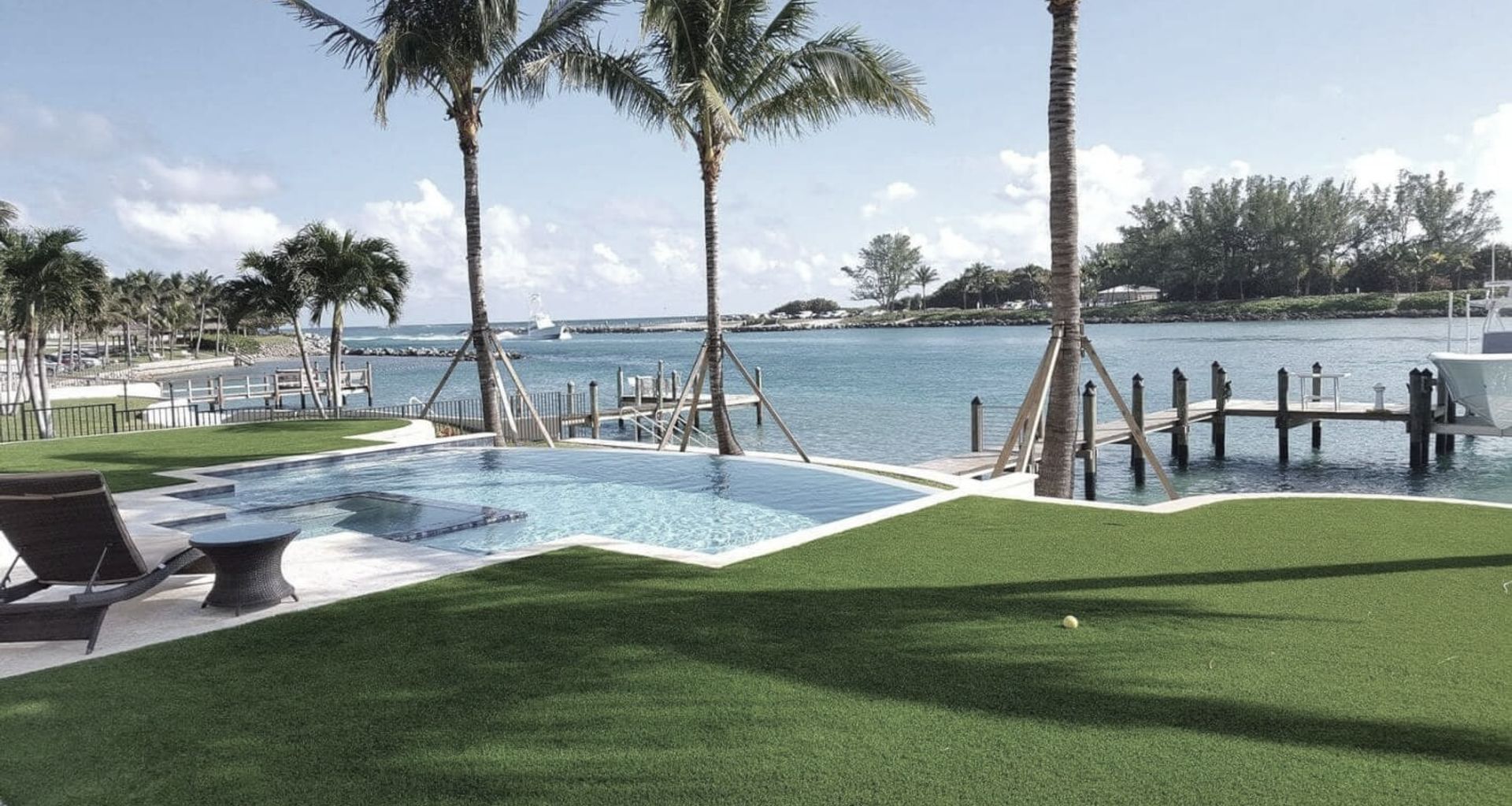Artificial Grass Vs Natural Lawn [Pros and Cons]

Artificial grass is quickly becoming a popular option among homescapers around the world. With improvements in synthetic grass technology, gone are the days of cheap plastic blades and swift sun damage. Grass doesn’t have to be real to look good, and fake doesn’t mean nasty any longer.
But what should you consider when you’re choosing a surface for your own backyard?
Discover what works for you by comparing maintenance routines, costs, and uses of each type of grass.
Let’s see how these two options stack up!
Pros of Natural Grass
It’s affordable to start a natural grass lawn
The upfront price of getting soil, seeds, or fresh grass, is relatively low. This project can be completed by yourself with little to no professional help, making it an excellent option for the budget-conscious.
Natural grass has the potential to last forever
If you enjoy spending your weekends in the garden and caring for your outdoor areas, then a natural lawn is a good option for you. A well-maintained natural lawn has the potential to last for years to come.
With a natural lawn, what you put in is what you get out. If you’re prepared to spend the necessary time weeding, watering, and mowing your lawn, you’ll be rewarded with a luscious green paradise to enjoy.
Cons of Natural Grass
Natural grass is high maintenance
For a lush-looking lawn, you’ll spend countless hours manicuring it to perfection. For time-poor individuals, a natural lawn may not be the simplest solution.
Natural lawn maintenance includes:
- Mowing
- Weed removal
- Fertilising
- Watering
- Overseeding
- Pest-control
To get the most out of your lawn, ensure your soil is at the right PH level and choose a seed blend that matches your local climate. This will slightly reduce the amount of fertilising, watering, and overseeding necessary for maintaining your backyard.
The recurring costs of maintaining a natural lawn add up
With a high maintenance routine comes high maintenance costs.
Lawnmowers, weed whackers, and line trimmers can be expensive to buy and operate. To counter this, try hiring a local landscaper. Beware: while this option has a low initial cost, it can add up over time.
Regular fertiliser and seed can be another recurring cost that homeowners overlook when choosing a natural grass backyard.
The environmental impacts of natural lawn
A natural lawn is quite literally alive, so it requires a lot of water. During the winter months, this isn’t much of a problem. But during the summer months, especially if you live in a drought-prone area, watering your lawn becomes more of a necessity. If neglected, instead of a vibrant green outdoor space, you’re left with a brown, dusty backyard.
The runoff from chemical fertilisers and weed treatments may contaminate the surrounding areas. What’s more, the large volumes of water used to maintain a natural lawn significantly impact the environment. In some areas of New Zealand and Australia, you will find yourself unable to water your backyard during certain months, as water must be conserved for drinking and washing.
Unfortunately, your natural lawn will be the first to feel the negative impacts of water restrictions.
Pros of Artificial Grass
Artificial grass is the low maintenance option
While artificial grass is not maintenance-free, it requires significantly less maintenance than natural grass. Spend more time enjoying your weekends with family rather than mowing, watering, and weeding your lawn.
See our five simple steps for maintaining artificial grass in your backyard.
Artificial grass is more eco-friendly
The low maintenance characteristics of artificial grass make it an eco-friendly option. Artificial grass uses significantly less water to maintain than natural lawn. As there is no need to mow it, the carbon emissions from lawnmowers are non-existent. There is little to no risk of chemical pollution from fertilisers, as artificial grass doesn’t need help growing.
An outdoor area that looks good every day
Enjoy a luscious green lawn all year round. Artificial grass now comes in a range of variations to keep your property looking its best. You can enjoy the feel and look of natural grass without the hassle of keeping up with it.
Check out our natural lawn alternatives here.
Artificial grass is customisable
You can customise your backyard to suit you and your family’s needs. Whether you are a sport mad, crazy about pets, or enjoy relaxing outside, an artificial lawn can help you create a backyard you love hanging out in.
Artificial grass can help you create:
- The perfect hassle-free entertaining spot
- A family games zone
- A tranquil balcony escape
- A pet’s paradise
Relish in a unique backyard that reflects you and your family with bright or multicoloured artificial grass.
Cons of Artificial Grass
Artificial grass is expensive initially
The initial cost of setting up an artificial lawn can seem expensive. The costs of acquiring the materials, leveling the base, and getting professional guidance quickly add up when designing your backyard.
However, you’ll find that you will save costs just as quickly. By no longer paying for fertiliser or equipment to maintain your lawn, you can enjoy a little extra pocket change in the long run.
It will need to be replaced eventually
While you will enjoy the longevity and durability of artificial grass, eventually, it will need to be replaced. Artificial grass generally has a life expectancy of approximately 15 years, but many have lasted much longer. Depending on your level of use, you can expect your artificial lawn to last for 10 to 15 years.
This allows you to change the design of your backyard periodically to keep up with trends and preferences or add in some new eye-catching features.
For more help designing a backyard with artificial grass that works for you, get in contact with our team.
